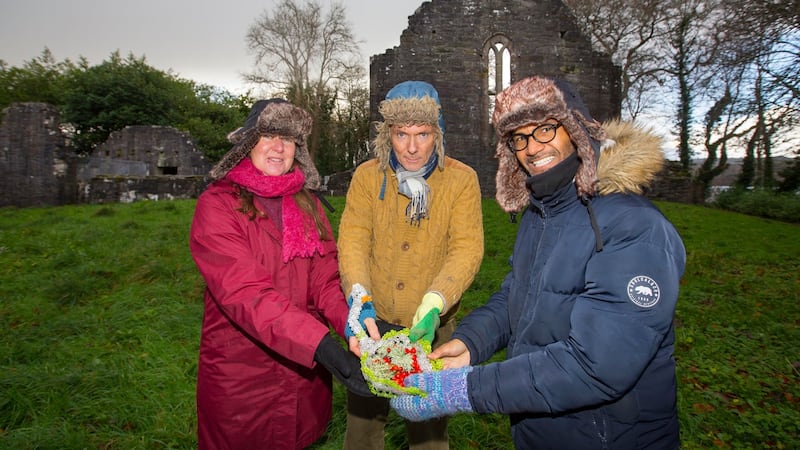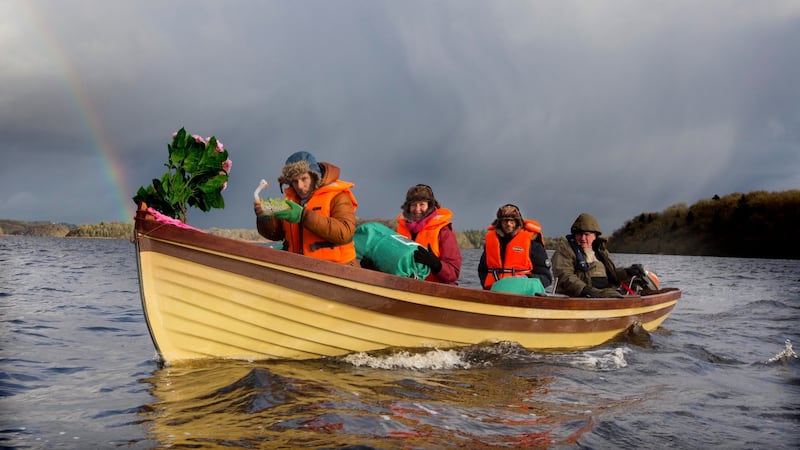It is over 430 years since monks put quill to parchment on an island in Lough Key, Co Roscommon, but the tradition of hand-written chronicling of church and global affairs is being revived.
The return of the annals, which began with Eusebius in Constantinople in AD 303, was marked on Trinity Island on Lough Key at the weekend. The location was chosen because the last entry to the Annals of Lough Key was made there in 1590. The team reviving the annals, who are based at the nearby Brú Moytura cultural centre in Co Sligo, hope to engage with the public by inviting them to suggest events for inclusion in the modern-day annals.

Colum Stapleton, curator of Brú Moytura, who is spearheading the project, said the quietness of the scene where the monks compiled the annals centuries ago made the weekend visit special.
“Seeing the abbey through the trees, it was amazing to think that it is still there intact, a connection from then until now.”
Commissioned
The Trinity Island monks who chronicled events from the early 15th century to 1590 were commissioned by their patrons, the McDermotts, who lived on nearby Castle Island, also on Lough Key. Mr Stapleton said they hope in time to “fill the gap”, and write up the “missing 432 years”. The missing history will be recorded on handmade parchment paper by “scribes” using natural ink made from berries and plants, and written with a nod to medieval calligraphy.
“No calves will be killed in the doing; so it’s parchment not vellum,” said Mr Stapleton, who built Brú Moytura, formerly the Gyreum eco lodge, on the Moytura plateau in 2000. An annals crowdfunding campaign will be launched in 2022 while groups such as colleges and families will be invited to sponsor a “missing year”.

Over the centuries the annals chronicled major and local events, first in Greek and later in Latin and Irish, providing accounts of invasions and pestilence, petty feuds and Church affairs. Not surprisingly the 2020 annals, already written by the Brú Moytura “scribes”, contain references to the Covid-19 pandemic.
The northwest of Ireland has a rich history of chronicling times past; as well as the Annals of Lough Key, other manuscripts associated with the region include the Annals of Boyle, of Ballymote, of Fenagh, two of Lecan (Enniscrone), as well as the Annals of Ulster.
The acclaimed Annals of the Four Masters were not a continuum of the works of Eusebius.
Biblical times
Mr Stapleton said one of the more remarkable stories contained in the ancient annals links Co Sligo with biblical times. It recounts how Noah’s granddaughter Cessair landed by boat at Milk Harbour, Streedagh, accompanied by 49 women followers and one man. “The accounts say she took the boat to Sligo because there was no place in the original ark for her.”
The formal welcome of the annals was conducted by archaeologist Dr Brian Lacey. “The writing of our ancient annals transformed Ireland from a pre-historic culture to one based on written evidence,” he said.
Mr Stapleton said a debt was owed to TCD academic Dr Dan McCarthy, author of The Genesis and Evolution of the Irish Annals( 2008) and The Irish Annals (2009) for the many insights he provided. Participating in the launch by Zoom, Dr McCarthy said he was delighted this “remarkable heritage” was being introduced to a wider audience.
Referencing the Covid-19 pandemic, he added: “There are records in the annals of pandemics which were far worse than this – one where 50 per cent of the population perished. So it holds up the hope that society survived and indeed flourished after much more severe pandemics.”











